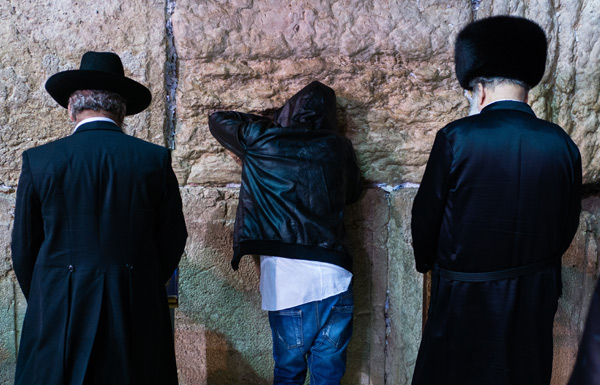
Day of Atonement: Messiah is Perfect High Priest and Sacrifice
Israel's three Fall Festivals—Trumpets, Atonement and Tabernacles—are grouped together within a three-week window. They afford us an annual opportunity to see a three-dimensional portrait of our messiah, Jesus, as we peer through that window and see Him through Jewish eyes.
There are three key reasons for every believer, whether Jewish or Gentle, to study the Fall Feasts. First, study of these feasts illuminates and deepens our understanding of the New Testament. As Paul emphasizes in his letter to the Colossians (2:16-17), these Jewish holy days point us to our Messiah. The very essence of each festival is richly saturated through and through with Christ. Second, these holy days are very important to our God. In Leviticus 23, where the calendar of these festivals is formally presented to Israel, the holy days are specifically referred to as His appointed times (23:2). Third, these festivals serve as instruments to help focus our prayers for the Jewish people.
The ten Days of Awe conclude with the Day of Atonement, Yom Kippur. This Holy Day illuminates Jesus’ mission as a satisfactory sacrifice to remove sin and illustrates His resurrection ministry as our great High Priest.
The Biblical term, Yom Kippurim, can be translated, The Day of Coverings. It does not indicate removal of sins, only a covering over of sins. According to Scripture the covering for sin is blood, the symbol of life (Leviticus 17:11). Without blood, there can be no atonement. Only Israel’s High Priest could act as Israel’s representative and carry the sacrificial blood into the Divine Presence in the Holy of Holies on this sacred day.
God gave Israel the sacrificial system in order to restore their sin-fractured relationship—to cover over their sin on an annual basis. Of course, this annual covering only lasted as long as individuals did not sin again. Indeed, following the Day of Atonement, the daily and weekly Levitical sacrifices immediately recommenced.
Without blood, shed within the sacrificial Temple ritual, there can be no atonement. So how do Jewish people make atonement for their sins today, in the absence of Temple sacrifice?
A few observant Jewish people have created their own ceremonies to keep this holiest day from being completely bloodless. There is a fascinating, “old-country” Jewish tradition called the Kapparot ceremony. A fowl is purchased and swung overhead three times. Words are recited to the effect: “This is my substitute. This is my vicarious offering. This is my covering. This chicken will go to its death, but I will enjoy a good, long and peaceful life.”
Jewish believers hold to a more satisfying solution. The New Testament letter to the Hebrews portrays Jesus as the ultimate fulfillment of Yom Kippur.
Hebrews 9-10 makes it clear that Jesus is now our great High Priest. This Priest did not first have to make atonement for his own sins before representing the people, for He was sinless. Furthermore, High Priests came and went as they were replaced or died. Jesus, as a resurrected High Priest, will minister forever.
Our sinless High Priest was also the perfect sacrifice. The very fact that animal sacrifices were repeatable proved that they were insufficient (Heb 10:1-4). Jesus’ sacrifice is a perfect offering sacrificed once for the total and complete eradication of sin. Animal blood could only annually cover up sin, not completely remove it.
With the death of Jesus, sins are no longer merely covered over. Now they are removed through our Messiah’s sacrifice, which has created true atonement between God and His people, both Jew and Gentile.